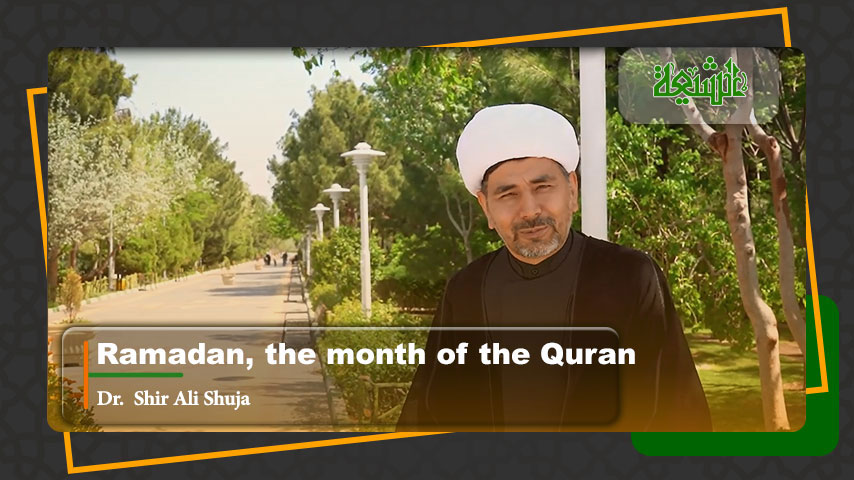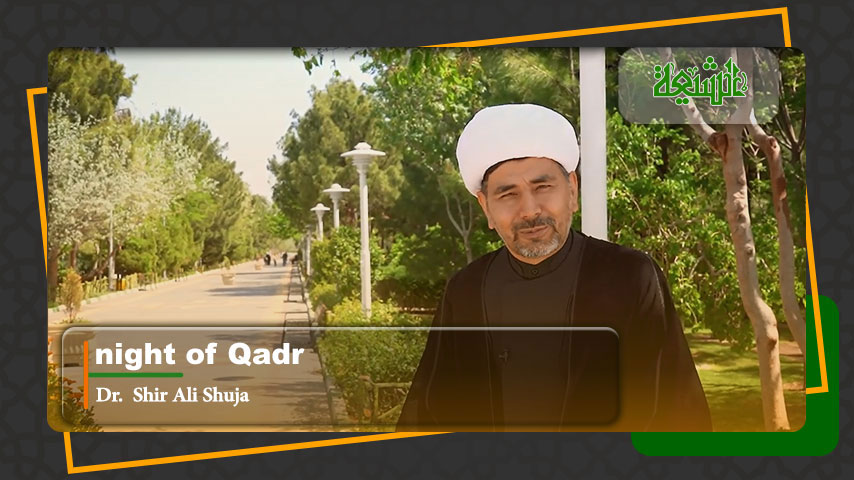In this section of the write up, we shall examine the biography and academic qualifications of Sayyida Nusrat Beygum Amin. She was one of the most outstanding female jurisprudents and theologians of the 20th century.
Introduction
History has shown the great achievements of committed Muslim women in the fields of culture and literature, and they have proven to be worthy role models of endeavor and self-devotion. Appreciating the position of women and doing justice towards them according to the glorious Qur’an and the conduct of the noble Prophet (s) and Infallibles (a) has always led to Muslim women’s progress in Islamic society.
Examples of such great women in the history of Islam are Khadija (a), Fatimah al-Zahra (a), Zaynab-e Kubra (a) and Sakinah (a), the daughter of Imam Husayn (a). Throughout Islamic history, there have been many devoted, knowledgeable, and pious women who excelled in educating society and in doing so have trained prominent men. Such women in the history of Shi’a Islam were the mother of Sayyid Radi and Sayyid Murtada, the daughter of Sheikh Tusi, and the daughter of Muhammad Taqi Majlisi.
After the Islamic Revolution of Iran, Iranian women who were well- trained under Islamic values demonstrated the great status of Muslim women to the world. The mothers and wives of the martyrs of the Iran- Iraq war displayed noble attributes of abstinence and piety, and were responsible for celebrating the achievements of great Muslim women.
In this paper, we will take a brief look at the personality of one of the finest exemplars of the society who held a high spiritual and academic status, making her one of the luminaries of the Islamic world.
This honorable and modest mujtahidah (4) lady is Sayyida Nusrat Amin, about whom Ayatullah Khamene’i stated, “Celebrating this Isfahani lady [Lady Amin] and introducing mystical, jurisprudential, and philosophical aspects of such a woman in our country is a cherished action that will revive the Islamic values in women.”(5)
The academic level and piety of this scholar demonstrated that faithful Muslim women who pursued high levels of knowledge are able to greatly contribute to academic and cultural services and set themselves free from deprivations imposed on them and upon Islam and Muslims by the enemies’ plotting and friends’ unawareness of Islamic and Qur’anic rulings.
Biography
Hajjiyyah (6) Sayyida Nusrat Beygum Amin (with the penname “the Iranian Lady”) was born in 1276 SC (1897 CE)(7) in Isfahan. Her father, Hajji(8) Sayyid Mohammad Ali Amin al-Tujjr Isfahani was a pious and generous man, and her mother was a respectable and benevolent woman.
Hajji Sayyid Mohammad Ali was the son of Sayyid Husayn and grandson of ‘Allamah Sayyid Ma‘sum Husayni Khatoon Abadi(9) whose mother was from a noble lineage.(10)
Lady Amin’s maternal family – the Jinabi family – were pious descendants of the Prophet (s) (Sayyids) from Isfahan and were great scholars, poets, and artists during the Safavid era.(11)
Lady Amin was born after three sons. At the age of four, her mother sent Lady Amin to Khadijah Beygum’s Qur’an School during a time when very few families allowed their daughters to go to school, due to the unIslamic atmosphere of most of the schools at that time.(12)
Thus, Lady Amin pursued her education until the age of thirteen, when she married her cousin, Hajji Mirza Aqa, known as Mu‘in al-Tujjar. During all the years she lived with her parents, they raised her well with utmost love and care.(13)
After marriage, though Lady Amin managed her domestic chores and trained her children, her responsibilities as a wife and mother did not prevent her from pursuing her education in Islamic sciences. She gave birth to eight children, although seven of them underwent early death with one son remaining.
As hard as it was, Lady Amin displayed patience and interpreted these events as Divine trials.(14) She passed away after a lifetime of devoted service on the 23rd of Khordad, 1362 SC (13th of June, 1983).
Ma‘sum. Recently, one person sought help from his blessed soul and his need was fulfilled. So, he made a tombstone for his grave and craved some verses on it which narrated the story of seeking help from Mir Ma‘sum’s soul and fulfilling his need.(15)
Academic Qualifications
Lady Amin involved herself in a variety of academic disciplines at home from qualified teachers. She dove into spiritual sciences and achieved honorable qualities along with her practical spiritual journey and her great efforts to learn Qur’anic sciences:
She grew up in a very spiritual way, and as she herself wrote in Nafahat al-Rahmaaniyyah, she was so thoughtful of God that she was able to hear the glorification of God by the flowers and plants. Until the age of forty, she practiced self-refinement and self-discipline, and passed through stages of spiritual journey.(16)
After learning Arabic conjugation, syntax, rhetoric, exegesis [of the Qur’an], hadith studies, jurisprudence (fiqh), principles of jurisprudence (usul), and Islamic philosophy, she continued her studies of fiqh and usul at higher levels until she achieved the degree of ijtihad.(17)
She was known for her fervent determination, as she once said, “Even the death of a child would not stop me from attending my classes.”
One of her teachers, the late Ayatullah Ali Najaf Abadi,(18) said, “I was amazed at her passion for learning. When I heard the news that her child had passed away, I thought she would not attend class anymore. On the contrary, two days later, she sent someone to ask me to come over and continue her lessons.”(19)
To be continued!
NOTES:
____________________
1. Descendants of Imam Ali (PBUH).
2. In Islamic law: a scholar’s independent interpretation or use of reason to derive a rule of divine law from the Qur’an, hadiths, reason and scholarly consensus.
3. Solar Calendar.
4. A female religious jurist, competent enough to apply private rulings in offering answers to legal questions.
5. Women’s Center for Cultural Studies, collection of articles and lectures of first and second congress of celebrating Sayyida Nusrat Amin, Center for Cultural study and research, 1374, p.
6. A woman who has performed the pilgrimage is titled as “Hajjiyyah.”
7. Nahid Tayyebi, Biography of the Iranian Lady, Sabequn publication, 1380, p. 26.
8. A man who has performed the pilgrimage is titled “Hajji.”
9. Mir Ma‘sum Hussayni Khatoon Abadi was a pious scholar from Isfahan. He passed away in 1155 (AH) and was buried near mausoleum of Aqa Muhammad Bid Abadi in Takht-e Fulad, Isfahan. It is said that Aqa Muhammad Bid Abadi saw a strange dream which proved spiritual greatness of Mir Ma’sum. Because of this reason, he wrote in his will to be buried near Mir.
10. Nahid Tayyebi, Ibid, p. 28; Naser Baqeri Bidhendi, Banuy-e Nemooneh, Jelweh hayi az Hayat-e Banuy-e Mojtahedeh Amin Isfahani, Qum, Islamic Office for Propagation, 1377, p. 29.
11. Ali Akbar Dehkhoda introduced the family of “Jenab-e Isfahani” as follows:
A: Abu Talib, son of Mirza Nasir who was a poet and calligrapher at the time of Sultan Hussein Safavi and the penman of the Supreme Court. (In Tadhkirah al-Qubur by Muslih al-Ddin Mahdawi, the date of his death is recorded as 1105 AH).
B: Fathullah, a poet who rose to the rank of supreme at the time of second Shah Tahmasb Safavi and was ordered by Nader Shah and was killed by his order 10 years later (1146 or 1148). (Dehkhoda Dictionary, Tehran, Tehran University, vol. 3, p. 7861).
12. Women’s Center for Cultural Studies, Ibid, p. 11; Sayyid Mostafa Hadawi (Shahir Isfahani), Yadnameh Sayyedeh Nusrat Amin, Isfahan, p. 9.
13. Nahid Tayyebi, Ibid, p. 32.
14. Ibid, p. 39; Women’s Center for Cultural Studies, Ibid, p. 11.
15. see: Nahid Tayyebi, Ibid, p. 28 quoted from Muhammad Ali Mudarrisi, Riyhanatul Adab, vol. 5, p. 266.
16. Iranian Woman: Introduction to morals and happiness, Isfahan, Council for supporting families without a guardian, 1371, p. 5.
17. Interpretive and independent reasoning.
18. Ayatullah Hajji Mir Sayyid Ali Najaf Abadi.
19. Sayyid Mustafa Hadawi, Ibid, pp. 13, 14.
















